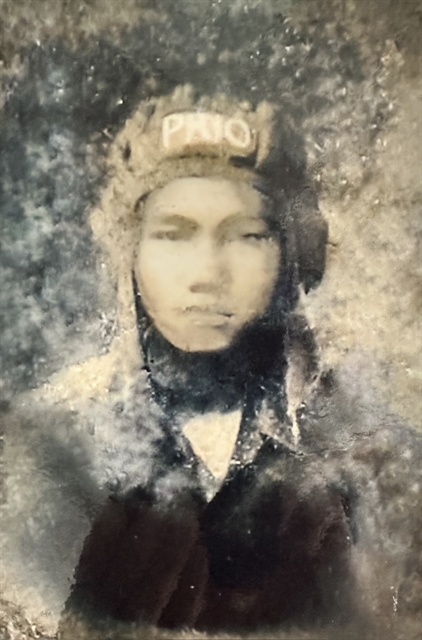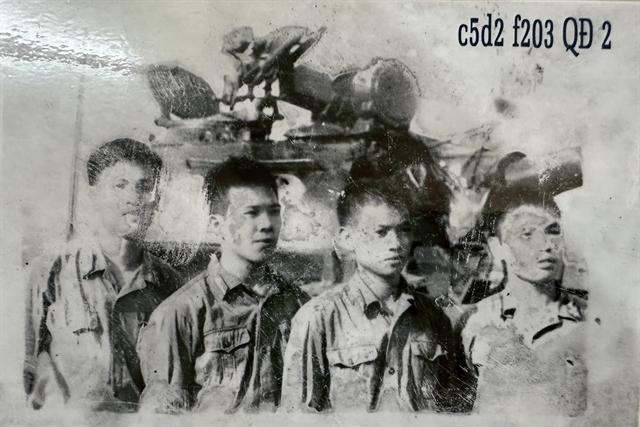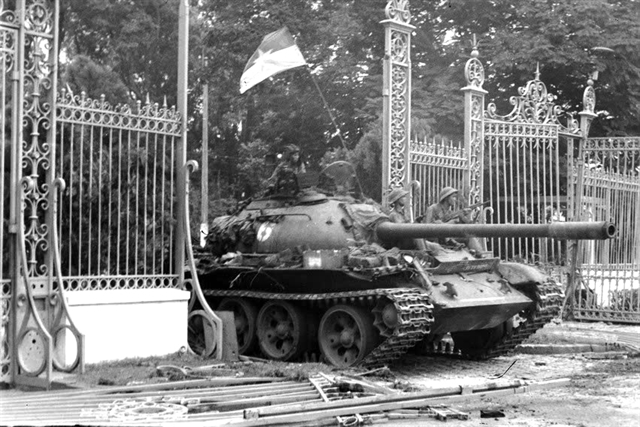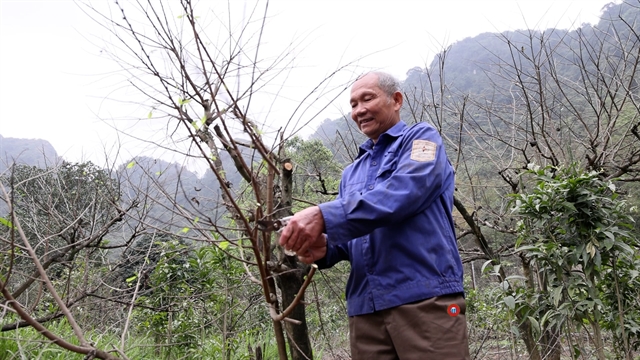Weather:
- Ha Noi 31oC
- Da Nang 31oC
- Ho Chi Minh 25oC
By Lê Hương
The anti-American War in Việt Nam ended 50 years ago. Former tank driver Trần Bình Yên has lived peacefully on his farm in Hà Nam Province, about 65km south of Hà Nội, much like thousands of other soldiers who served in the war.
His main work now is taking care of a custard apple farm, nestled at the foot of the Ba Sao mountain region.
Yet, he still remembers multiple moments from that intense period.
Responding to the sacred call of the Motherland, in December 1972 Yên enlisted in the military. After about a year of training as a tank driver at Regiment 207 in Vĩnh Phú Province, by the end of 1973, he was transferred to Company 5, Battalion 2, Brigade 203, 2nd Corps, and then moved south with his unit to Quảng Trị.
“At that time, the road was difficult to travel. The first time we drove through the forest, we took a detour via Road 9, Khe Sanh, crossed into Laos, and then returned to Việt Nam,” he told Việt Nam News. “We first passed a slope called Heaven’s Gate and the 'Mèo' slope.

"Driving at night, the tank had to have a guide for safety. We couldn’t turn on the headlights; instead, we had to use a dim light to elude enemy recon aircraft. Later, I asked the others, and they said, 'That slope is Phượng Hoàng slope…’”
He cannot forget the incidents at Phượng Hoàng Pass in the Central Highlands province of Đắk Lắk and in the central province of Bình Định. In remembrance of these places, he later named his daughter Phượng and his two sons Bình and Định, born after the war.
On long journeys, many breakdowns required constant repairs. For the drivers, maintaining the vehicle was essential. With advanced weaponry, regular oiling, greasing, and maintenance were necessary. The main problem was often damaged tracks, he said.

The road was full of rocks, and the tracks would bend or break when running over them, leading to wear and tear that required replacement. “The drivers were mainly responsible for this, while the gunners focused on their tasks. As drivers, we naturally bore a relatively heavy responsibility,” he said.
Upon arriving in Quảng Trị, he was assigned a T54B tank – number 846 – and he drove this tank throughout the historic Hồ Chí Minh Campaign to liberate the South.
Stationed at A Sầu and A Lưới (in Thừa Thiên Huế) for some time, in early 1975, his unit received orders to travel from A Sầu, A Lưới along the Trường Sơn Trail (Route 14B) towards Đà Nẵng, and then, together with Brigade 203, advanced toward Sài Gòn.
His unit was tasked with attacking the enemy’s tank training school in Nước Trong, Long Thành, Đồng Nai.
“Political Commissar Bùi Văn Tùng came down to assign the mission directly, and the staff had built a sand table to brief us,” he said.
“They reminded us that this was a crucial mission to open the 'main door.' If we could open this 'door', we would only need to attack the Thủ Đức defence line, and the battle would be nearly over. They told us that whoever entered first would be the one to hoist the flag of the South Việt Nam Liberation Front, and they said it with great enthusiasm. Talking about the Hồ Chí Minh Campaign, I suddenly felt excited, filled with energy and joy. Everyone had their tasks, working as fast as possible, preparing for the starting time.”

After defeating the enemy at the Nước Trong military base, his unit was assigned to head towards Sài Gòn.
His tank was the fourth of the seven to enter the Independence Palace at noon on April 30.
Now a farmer, without any formal title, Yên is still content, knowing that he made a small contribution to the final historic mission that ended the prolonged war.
“My efforts are limitless and boundless, ready to dedicate all my strength and intellect towards peace and national unification, building a prosperous and beautiful homeland, and a civilised society,” he said. “Sadly, some of my comrades didn’t make it to the day of peace; there’s not even a trace of them left.”

Yên left the army in 1980, returned to his hometown, and worked as an electrician. He later became the head of the local militia and eventually joined the village police.
Yet, he has never forgotten the memories of war.
“In my dreams, I still see my comrades. I see myself driving a tank,” he said. “I still shout, 'Move left! Move right! Fire!' – just like I did back then.”
Thinking back to the times when they shared everything – food, shelter, even some malaria pills – now that they’re no longer here with him, brings tears to his eyes.
“Losing a comrade feels like losing a part of myself, and it’s very sorrowful,” he said. “As for any honours or recognitions from the government, that is their right. If we receive them, we accept them; if not, it's not a big deal. We don’t hold any grudges. That is the duty of a soldier, and completing the mission is the true satisfaction.”

Simple and warm-hearted by nature, Yên feels satisfied with his life.
“I still strive on my own, with my own hands and labour, creating material wealth through my efforts,” he said with a warm smile. “I am also content with my current life.” VNS
(Additional interview by Bảo Long)


